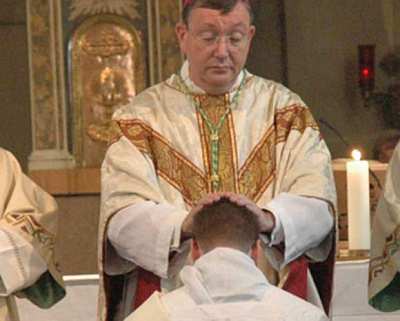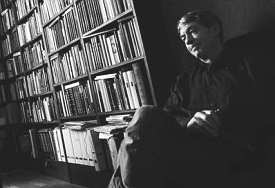Ang. teamet evangelisering vil jeg minne om at pave Paul VI sendte ut en apostolisk formaning om forkynnelsen av evangeliset i desember 1975, kalt Evangelii nuntiandi. Denne viktige teksten ble utgitt i bokform i Norge i 1978, og for ti år siden skanna jeg den inn og katolsk.no la den på nett (på lenken over).
Paul VI innleder denne «exhortatio»en slik:
Den innsatsen som gjøres for å forkynne evangeliet for vår tids mennesker, som nærer håp midt i sin frykt og fortvilelse, er utvilsomt til gavn for det kristne fellesskap og for hele menneskeheten. Derfor mener vi at oppgaven å styrke brødrene … … får særlig stor viktighet. For det dreier seg om å oppmuntre våre brødre til å forkynne evangeliet slik at de, i denne tid da der er så mye usikkerhet og forvirring, skal kunne utføre dette oppdrag med stadig økende kjærlighet, iver og glede.
Dette er nøyaktig hva vi ønsker å gjøre her, ved utgangen av dette Hellige År 1975, da Kirken «som streber etter å forkynne evangeliet for alle mennesker» har hatt som sitt eneste mål å oppfylle sin plikt til å bringe det glade budskap om Jesus Kristus, det glade budskap som kommer til uttrykk i to grunnleggende bud: «ifør dere et nytt menneske» og «La dere forlike med Gud».
Vi har ved mange anledninger understreket viktigheten av å forkynne evangeliet .. .. og bl.a. sagt: «Forholdene i vårt samfunn forplikter oss alle til å ta våre metoder opp til gjennomtenkning, til å prøve på enhver måte å undersøke hvordan vi best kan bringe kristendommens budskap til vår tids mennesker. For bare i det kristne budskap kan nåtidsmennesket finne svar på sine spørsmål, og kraft til å arbeide for samhold mennesker imellom». .. .. det er helt nødvendig at vi både holder fast ved den troens arv som Kirken er forpliktet til å bevare i ubesmittet renhet, og bringer den videre til vår tids mennesker på en måte som er mest mulig forståelig og overbevisende.
Denne troskap både mot budskapet vi tjener og mot menneskene vi skal overbringe det til, levende og ubeskåret, er hovedsaken ved forkynnelsen av evangeliet. I denne sammenheng melder det seg tre særlig viktige spørsmål:
1 Hva er i våre dager skjedd med det glade budskaps skjulte kraft, den som i så sterk grad har makt til å påvirke menneskene?
2 I hvilken grad og på hvilken måte er evangeliets kraft i stand til virkelig å omskape vårt århundres mennesker?
3 Hvilke metoder bør man bruke for at evangeliet skal få sin virkning?
Egentlig uttrykker disse spørsmålene ett fundamentalt spørsmål som Kirken står overfor i dag, og som kan uttrykkes slik: Er Kirken, .. nå etter 2. Vatikankonsil … , blitt bedre i stand til å forkynne evangeliet slik at det overbeviser menneskene, gir dem åndens frihet og styrker dem?
Her er igjen lenken til hele Evangelii nuntiandi.
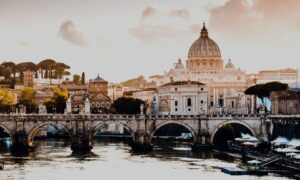
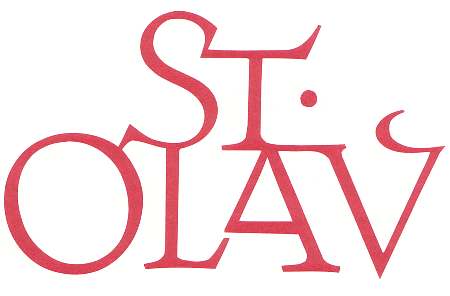
 Markus’ navn forbindes ofte med Venezia, fordi (sier historien) to kjøpmennen i år 828 røvet hans relikvier fra Alexandria for at de ikke skulle skjendes av de fremstormende muslimene. Da de kom til Venezia med sin dyrebare last den 31. januar 828, ble relikviene skrinlagt i den opprinnelige San Marco-kirken. Denne var forløperen for dagens katedral, som ble bygd mellom 1063 og 1073. Markus ble dermed byens skytshelgen, noe han fortsatt er, og den store plassen foran katedralen er på mange måter fortsatt byens sentrum.
Markus’ navn forbindes ofte med Venezia, fordi (sier historien) to kjøpmennen i år 828 røvet hans relikvier fra Alexandria for at de ikke skulle skjendes av de fremstormende muslimene. Da de kom til Venezia med sin dyrebare last den 31. januar 828, ble relikviene skrinlagt i den opprinnelige San Marco-kirken. Denne var forløperen for dagens katedral, som ble bygd mellom 1063 og 1073. Markus ble dermed byens skytshelgen, noe han fortsatt er, og den store plassen foran katedralen er på mange måter fortsatt byens sentrum.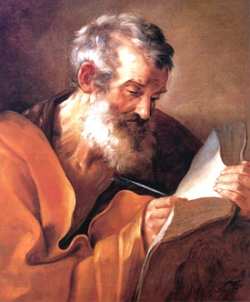 Den hellige Markus skrev Markus-evangeliet. Han betraktes i vest som identisk med den Markus (Barnabas’ nevø) som nevnes av den hellige apostelen Paulus i brevet til kolosserne: «Aristark, min medfange, hilser dere, og det samme gjør Markus, fetter til Barnabas. Dere har fått beskjed om ham; ta godt imot ham hvis han kommer» (Kol 4,10). Han betraktes også som identisk med den Johannes Markus fra Apostlenes gjerninger som omtales flere ganger i Det nye Testamente: «Barnabas og Saulus utførte sitt oppdrag i Jerusalem og tok med seg Johannes med tilnavnet Markus da de drog derfra» (Apg 12,25).
Den hellige Markus skrev Markus-evangeliet. Han betraktes i vest som identisk med den Markus (Barnabas’ nevø) som nevnes av den hellige apostelen Paulus i brevet til kolosserne: «Aristark, min medfange, hilser dere, og det samme gjør Markus, fetter til Barnabas. Dere har fått beskjed om ham; ta godt imot ham hvis han kommer» (Kol 4,10). Han betraktes også som identisk med den Johannes Markus fra Apostlenes gjerninger som omtales flere ganger i Det nye Testamente: «Barnabas og Saulus utførte sitt oppdrag i Jerusalem og tok med seg Johannes med tilnavnet Markus da de drog derfra» (Apg 12,25).